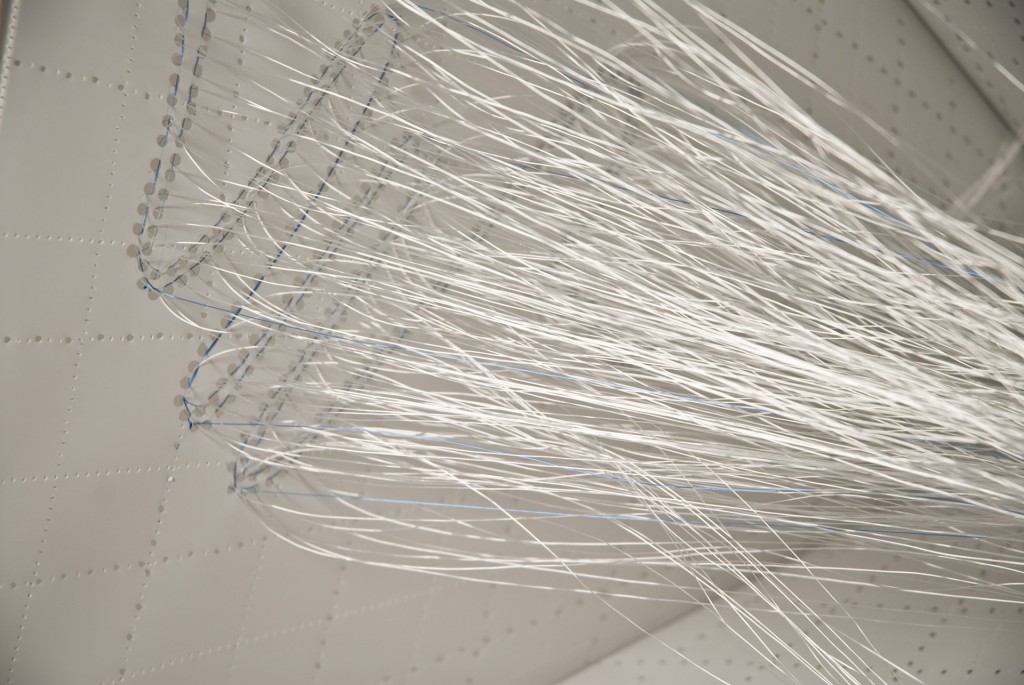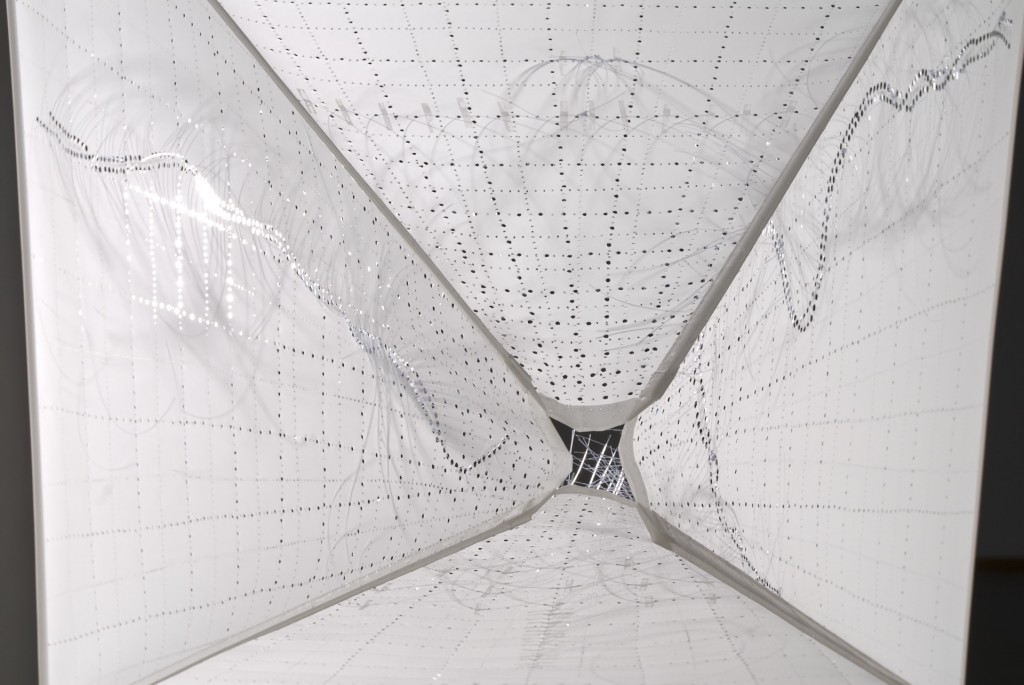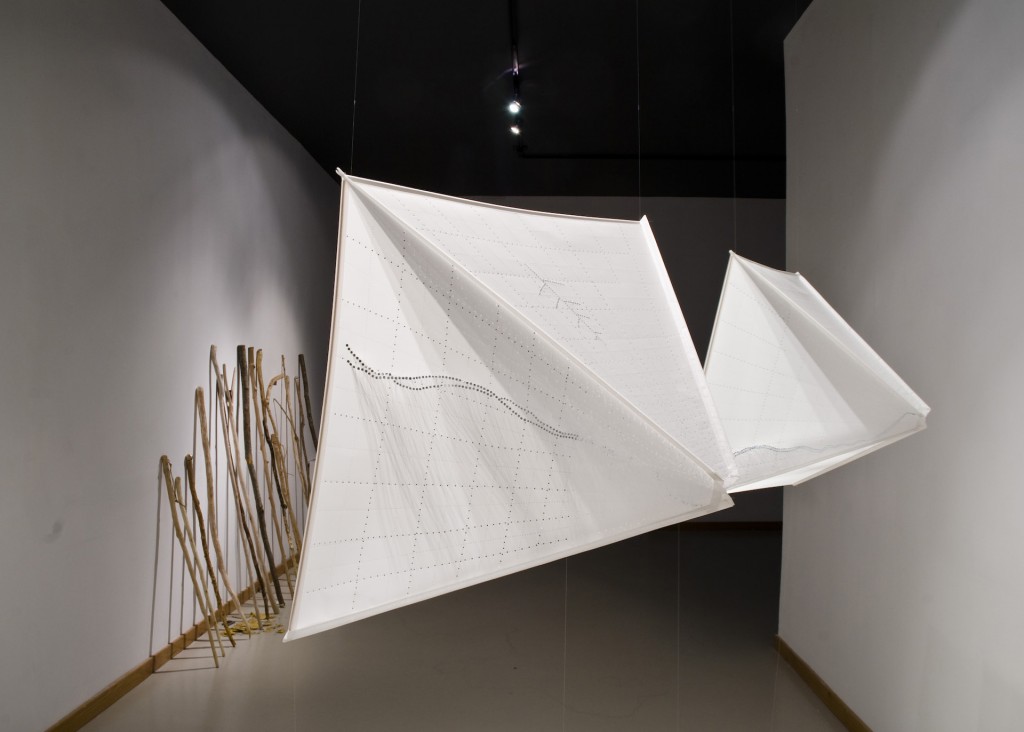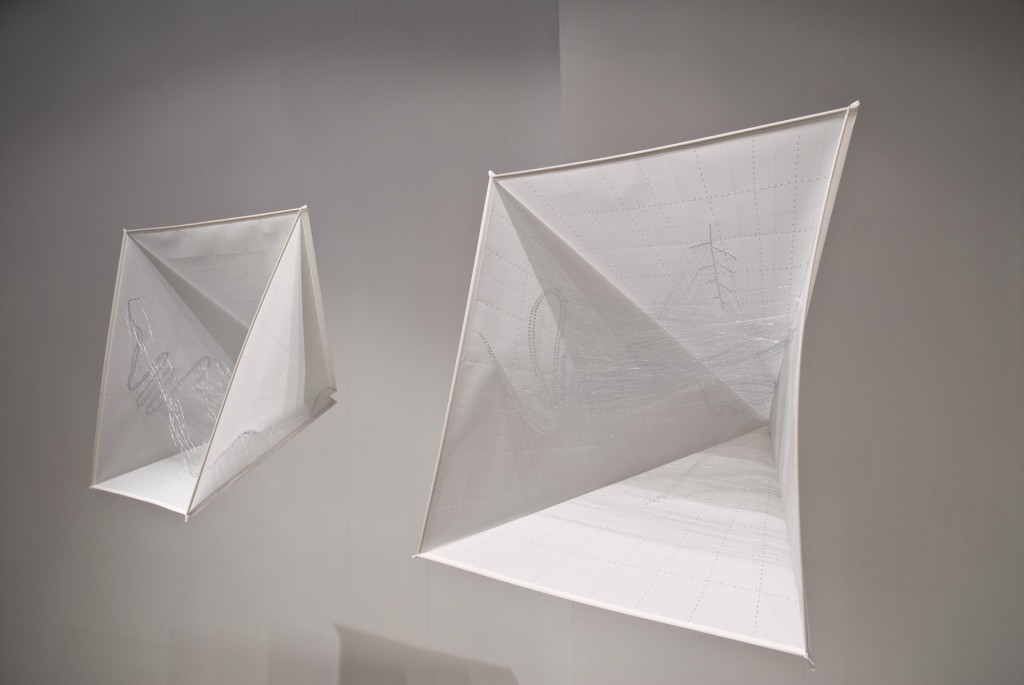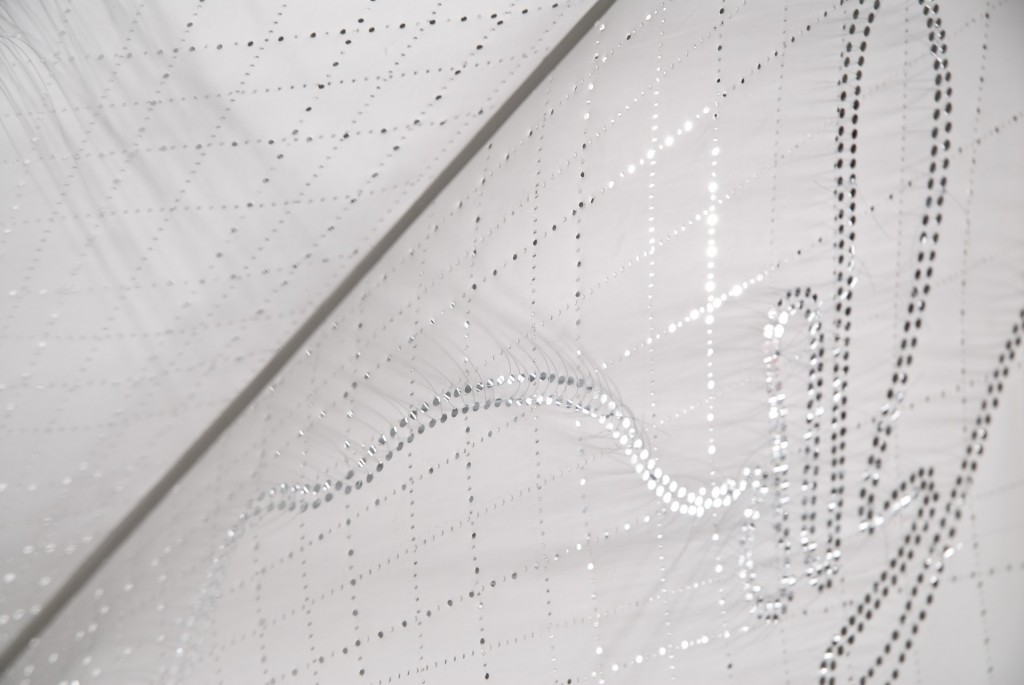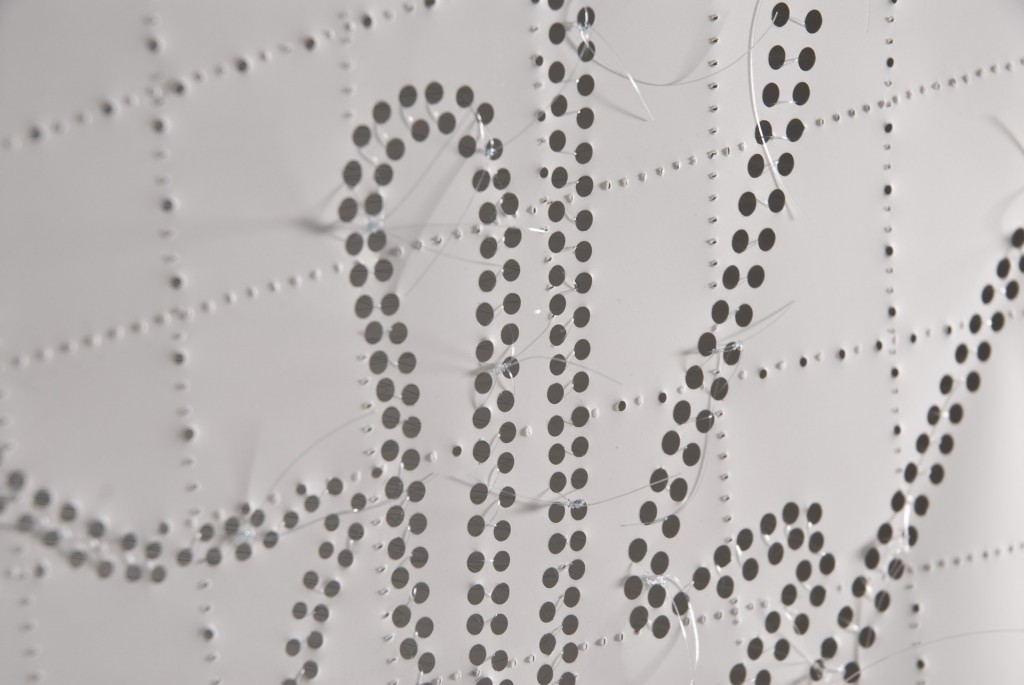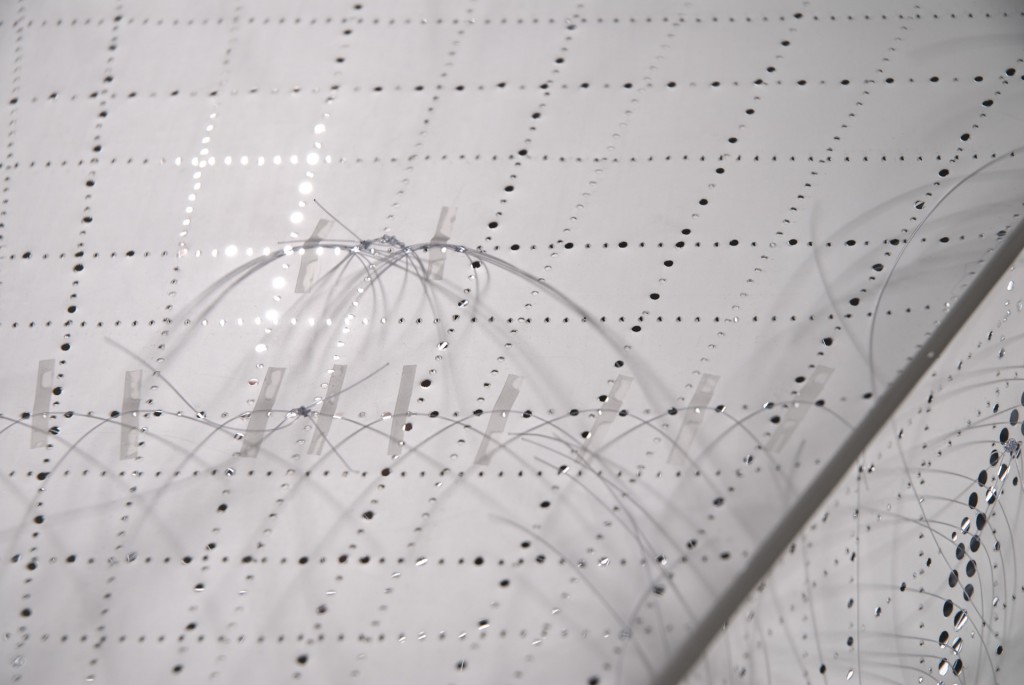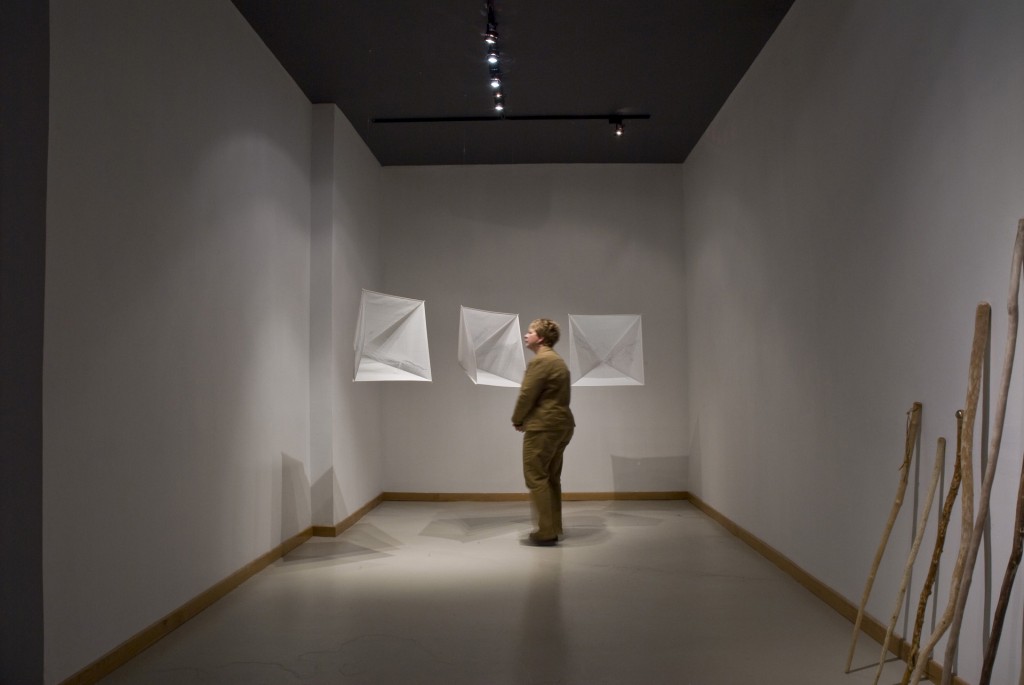Footfall considered the tensions between the geometric conceptualisation of a walk as articulated on a map, and the actual experience of it in terms of the physical change in altitude. Each maquette was made of folded and stitched Mylar and related to walks made to Burstall Pass, the Burgess Shale and Sulphur Mountain, near Banff, Canada. The Mylar surface was repetitiously perforated with a map of each walk and placed directly opposite a constructed section of each walk. Corresponding sites on the plan and section were then connected through monofilament stitching to construct a three-dimensional web within the space of the maquette. This manner of relating modes of architectural drawing allowed the crossing of body and space as articulated on a map to take on a non-representational three-dimensional form. In these works the act of stitching recalled the repetitious act of walking, and the monofilament web emerged as a shadow of both the walk and the act of stitching required to construct it.
